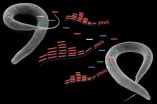(Press-News.org) WOODS HOLE, Mass.— Proteomics, the study of large groups of proteins, can enhance our understanding of a wide range of organisms, with applications in medicine and developmental biology. Such analyses traditionally require a complete genome for the organism being studied in order to obtain a reference set of proteins. However, many organisms that hold potential for proteomic analysis do not yet have completely sequenced and well-interpreted genomes because the costs, in terms of both time and money, can be prohibitive. Xenopus laevis, the African clawed frog, is one such species.
A collaborative study between scientists at Harvard Medical School and the MBL's National Xenopus Resource (NXR), published last week in Current Biology, has found a work-around. Instead of relying on DNA, researchers used mRNA sequences to more efficiently create a reference database that can be used for proteomic analysis of Xenopus.
"The mRNA is the product of a gene, so it's simpler to sequence because the different [coding sequences] have already been spliced together," said Marko Horb, the MBL scientist who contributed the mRNA sequences for the project. Horb is director of the NXR, a collaborative center that facilitates frog research through breeding programs and development of new experimental techniques. Harvard Medical School researchers Martin Wuhr and Robert Freeman, Jr. (co-first authors on the paper), along with Leon Peshkin, have all taught at the NXR Bioinformatics Workshop at the MBL.
The researchers used their reference database to identify over 11,000 proteins from an unfertilized Xenopus egg and estimate the abundance of these proteins. The method outperformed comparison proteomic analyses based on a preliminary, unpublished Xenopus genome and other protein reference databases.
Their cost-effective solution opens the door for further proteomics experiments in frogs. "Xenopus is wonderful for proteomics, mostly because it's easy to get a lot of proteins from highly interesting states," said Wühr. Just one Xenopus egg—about a millimeter in diameter—provides about 30 micrograms of protein, which is sufficient for deep proteomic analysis.
The reference database that came out of this experiment is Xenopus-specific, but the same method could be applied to other species. To facilitate its use, the researchers provide a web-tool that will allow other scientists to convert mRNA data from other species into a protein reference database.
"For a lot of organisms, a high-quality sequenced genome won't be available any time soon. The methods we developed are much easier to implement, and the results we obtained from our proteomic analysis are comparable to or better than those obtained with a genome close to being released," said Wühr.
INFORMATION:
The Marine Biological Laboratory (MBL) is dedicated to scientific discovery and improving the human condition through research and education in biology, biomedicine, and environmental science. Founded in Woods Hole, Massachusetts, in 1888, the MBL is a private, nonprofit institution and an affiliate of the University of Chicago.
Citation:
Wühr M, Freeman Jr RM, Presler M, Horb ME, Peshkin L, Gygi SP, & Kirschner MW (2014). Deep Proteomics of the Xenopus laevis Egg using an mRNA-Derived Reference Database. Current Biology 24: 1467–1475
National Xenopus resource at the MBL innovates new way to study proteins
2014-07-17
ELSE PRESS RELEASES FROM THIS DATE:
Birdsongs automatically decoded by computer scientists
2014-07-17
Birdsongs automatically decoded by computer scientists
Scientists from Queen Mary University of London have found a successful way of identifying bird sounds from large audio collections, which could be useful for expert and amateur bird-watchers alike.
The analysis used recordings of individual birds and of dawn choruses to identify characteristics of bird sounds. It took advantage of large datasets of sound recordings provided by the British Library Sound Archive, and online sources such as the Dutch archive called Xeno Canto.
Publishing in the journal PeerJ, ...
Study shows how effects of starvation can be passed to future generations
2014-07-17
NEW YORK, NY — Evidence from human famines and animal studies suggests that starvation can affect the health of descendants of famished individuals. But how such an acquired trait might be transmitted from one generation to the next has not been clear. A new study, involving roundworms, shows that starvation induces specific changes in so-called small RNAs and that these changes are inherited through at least three consecutive generations, apparently without any DNA involvement. The study, conducted by Columbia University Medical Center (CUMC) researchers, offers ...
How does working part-time versus working full-time affect breastfeeding goals?
2014-07-17
Los Angeles, CA -- Breastfeeding is known to provide significant health benefits for both infants and their mothers. However, while many women intend to breastfeed despite returning to work, a new study finds that mothers who plan to breastfeed for at least three months but return to work full-time are less likely to meet their breastfeeding goals. Conversely, there is no association between women who return to work part-time and failure to reach the breastfeeding goal of at least three months. This new study was published today in the Journal of Human Lactation.
Studying ...
Improving the cost and efficiency of renewable energy storage
2014-07-17
A major challenge in renewable energy is storage. A common approach is a reaction that splits water into oxygen and hydrogen, and uses the hydrogen as a fuel to store energy. The efficiency of 'water splitting' depends heavily on a solid substance called a catalyst. However, only the surface of the catalyst acts on the reaction, while its bulk is inactive. This restricts how much catalyst can be used, and limits the efficiency of water splitting in energy systems. Publishing in Nature Communications, EPFL scientists have developed a new method for maximizing the catalyst's ...
For the sickest emergency patients, death risk is lowest at busiest emergency centers
2014-07-17
ANN ARBOR, Mich. — When a medical emergency strikes, our gut tells us to get to the nearest hospital quickly. But a new study suggests that busier emergency centers may actually give the best chance of surviving – especially for people suffering life-threatening medical crises.
In fact, the analysis finds that patients admitted to a hospital after an emergency had a 10 percent lower chance of dying in the hospital if they initially went to one of the nation's busiest emergency departments, compared with the least busy.
The risk of dying differed even more for patients ...
Best anticoagulants after orthopedic procedures depends on type of surgery
2014-07-17
Current guidelines do not distinguish between aspirin and more potent blood thinners for protecting against blood clots in patients who undergo major orthopedic operations, leaving the decision up to individual clinicians. A new analysis published today in the Journal of Hospital Medicine provides much-needed information that summarizes existing studies about which medications are best after different types of surgery.
Every year, hundreds of thousands of Americans undergo major orthopedic surgery such as hip and knee replacements and hip fracture repairs. Patients undergoing ...
Findings suggest antivirals underprescribed for patients at risk for flu complications
2014-07-17
Patients likely to benefit the most from antiviral therapy for influenza were prescribed these drugs infrequently during the 2012-2013 influenza season, while antibiotics may have been overprescribed. Published in Clinical Infectious Diseases and now available online, the findings suggest more efforts are needed to educate clinicians about the appropriate use of antivirals and antibiotics in the outpatient setting.
Influenza is a significant cause of mortality and morbidity, resulting in more than 200,000 hospitalizations in the U.S. each year, on average. While annual ...
New view of Rainier's volcanic plumbing
2014-07-17
SALT LAKE CITY, July 17, 2014 – By measuring how fast Earth conducts electricity and seismic waves, a University of Utah researcher and colleagues made a detailed picture of Mount Rainier's deep volcanic plumbing and partly molten rock that will erupt again someday.
"This is the most direct image yet capturing the melting process that feeds magma into a crustal reservoir that eventually is tapped for eruptions," says geophysicist Phil Wannamaker, of the university's Energy & Geoscience Institute and Department of Civil and Environmental Engineering. "But it does not provide ...
Asthma drugs suppress growth
2014-07-17
Corticosteroid drugs that are given by inhalers to children with asthma may suppress their growth, evidence suggests. Two new systematic reviews published in The Cochrane Library focus on the effects of inhaled corticosteroid drugs (ICS) on growth rates. The authors found children's growth slowed in the first year of treatment, although the effects were minimised by using lower doses.
Inhaled corticosteroids are prescribed as first-line treatments for adults and children with persistent asthma. They are the most effective drugs for controlling asthma and clearly reduce ...
Niacin too dangerous for routine cholesterol therapy
2014-07-17
CHICAGO --- After 50 years of being a mainstay cholesterol therapy, niacin should no longer be prescribed for most patients due to potential increased risk of death, dangerous side effects and no benefit in reducing heart attacks and strokes, writes Northwestern Medicine® preventive cardiologist Donald Lloyd-Jones, M.D., in a New England Journal of Medicine editorial.
Lloyd-Jones's editorial is based on a large new study published in the journal that looked at adults, ages 50 to 80, with cardiovascular disease who took extended-release niacin (vitamin B3) and laropiprant ...


